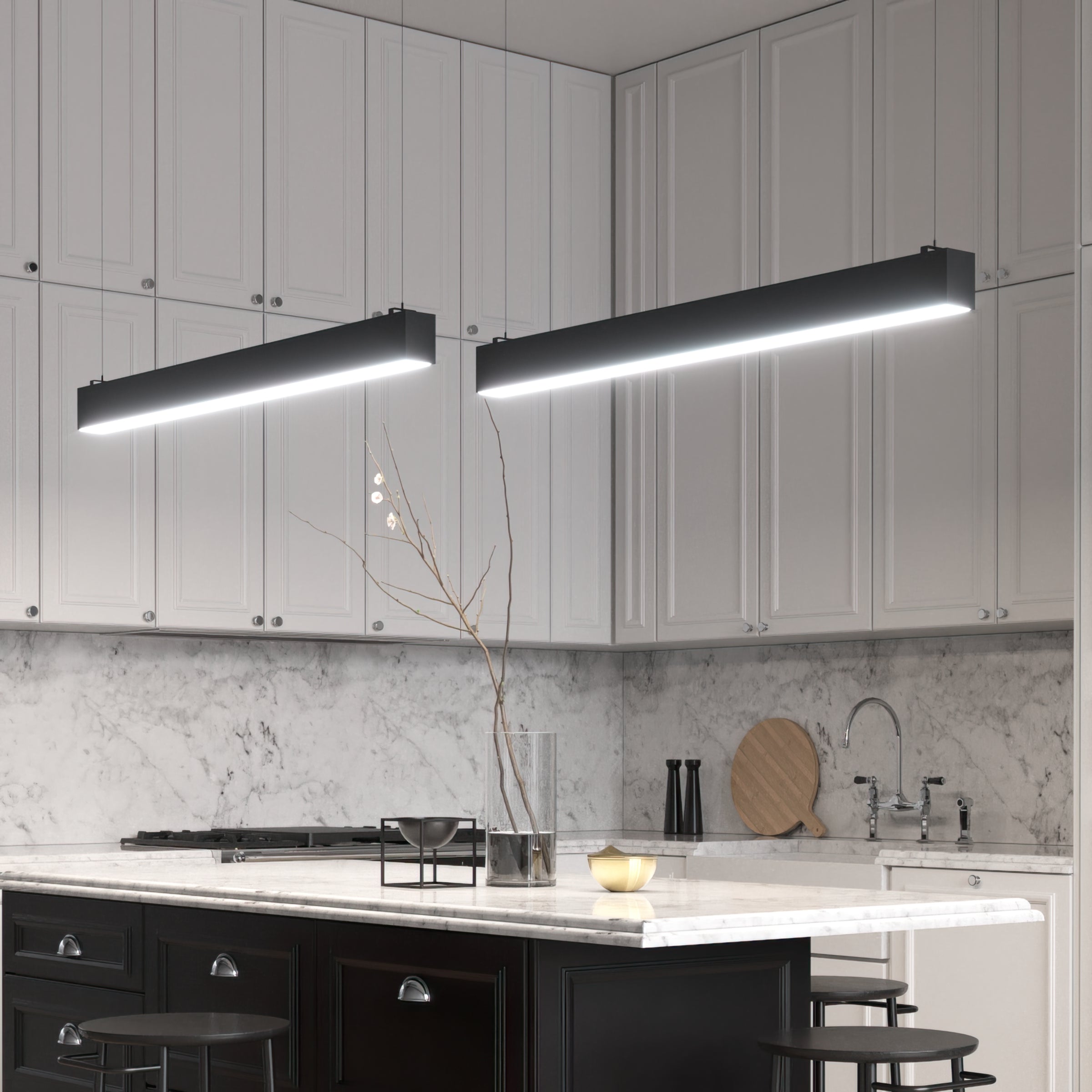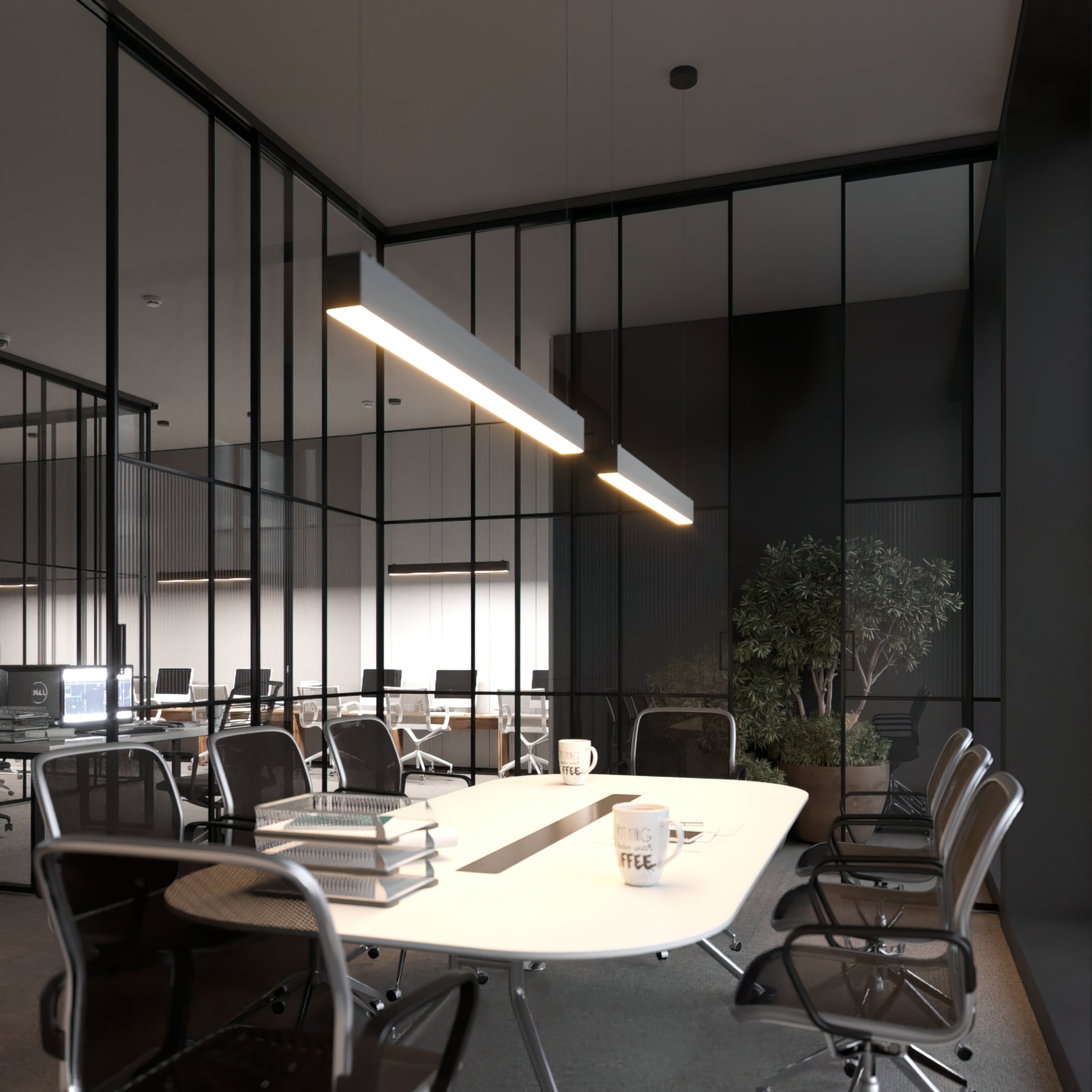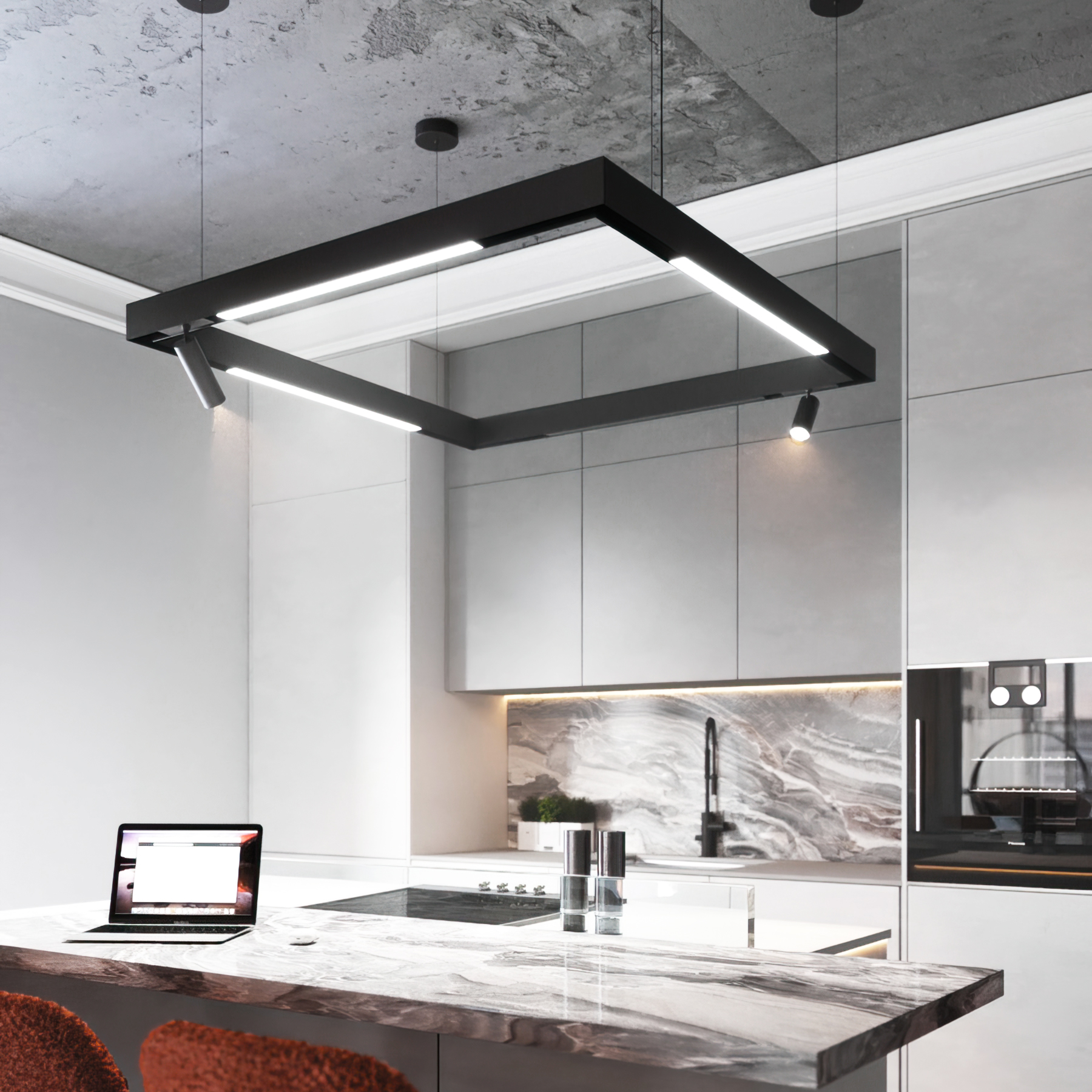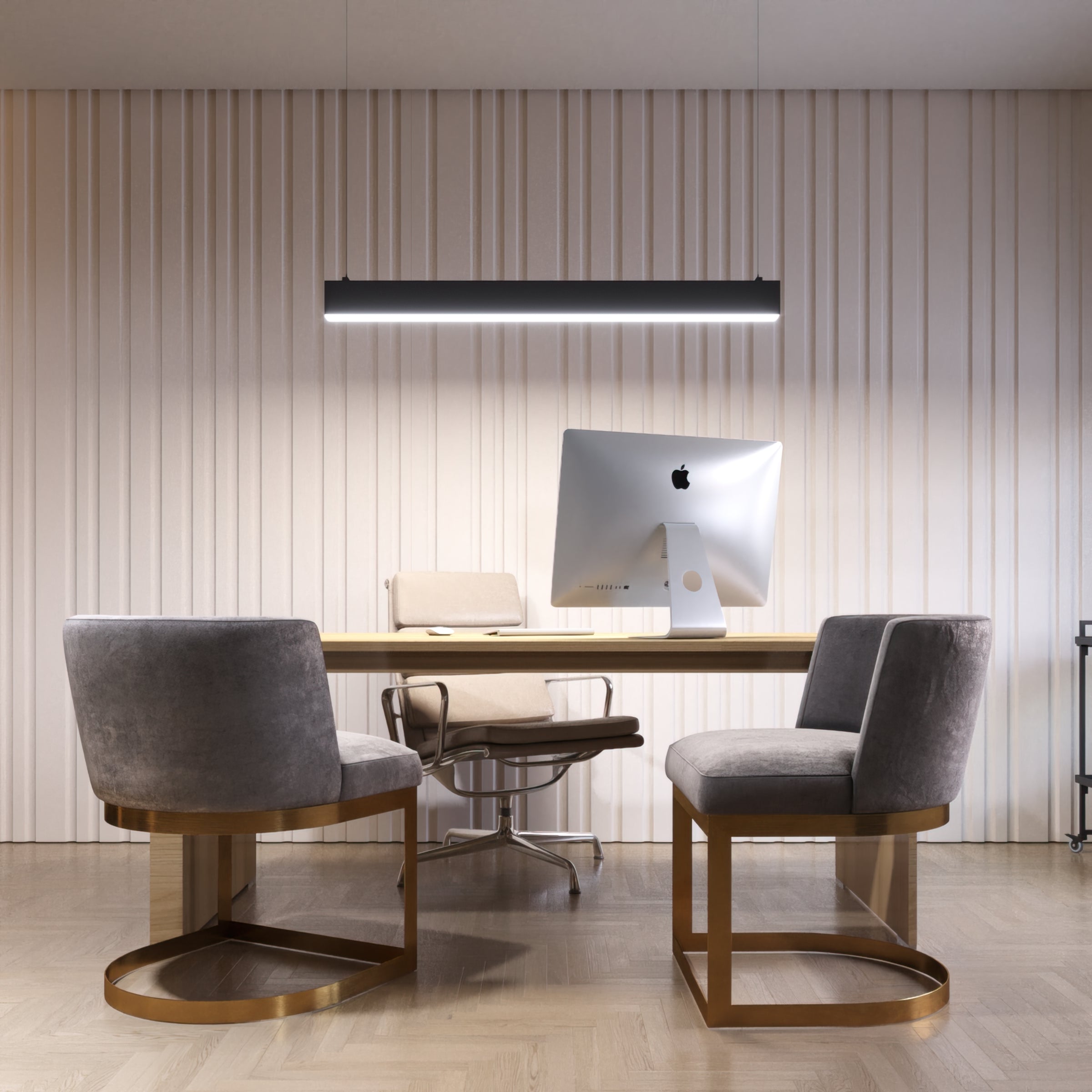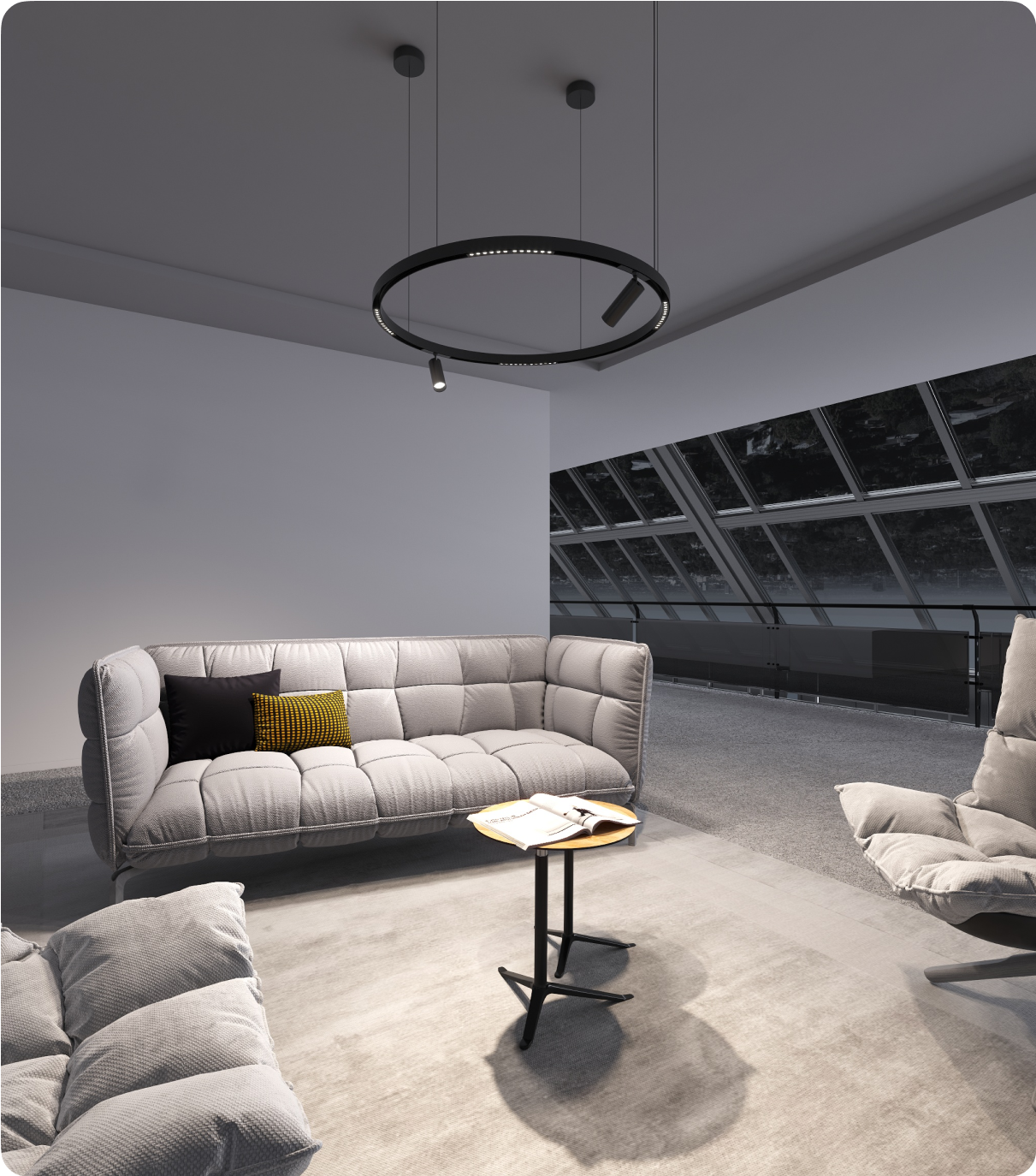Creating the perfect lighting plan for your home is more than just installing a few light fixtures — it's about crafting an environment that enhances both the functionality and atmosphere of your living spaces. Proper lighting can transform a room from merely functional to truly extraordinary, affecting everything from your mood and productivity to your home's aesthetic appeal.
The impact of interior design lighting extends far beyond basic illumination. It can make spaces feel larger or cozier, highlight architectural features, create focal points, and influence your daily routines and circadian rhythms. Whether cooking in the kitchen, reading in your study, or relaxing in the living room, the proper lighting makes all the difference in how you experience and use each space.
This comprehensive guide will explore seven essential considerations for developing an effective home lighting plan. These actionable tips will help you create a well-balanced lighting scheme that not only meets your practical needs but also enhances the beauty and comfort of your home. From understanding different types of lighting to selecting the right fixtures and positioning them effectively, we'll cover everything you need to know to illuminate your space like a professional.

The option of original planning of LED lighting layout in your home
Seven Essential Tips for Creating a Lighting Plan
Understand the Purpose of Each Room
Before embarking on any home lighting design installation, it is essential to thoroughly evaluate how each space in your home will be utilized throughout the day and evening. Different activities and times of day necessitate distinct lighting approaches - for instance, reading or detailed work requires bright, focused illumination directed at specific areas. At the same time, social gatherings and entertainment spaces benefit from softer, more ambient lighting that helps create a welcoming and relaxed atmosphere. The lighting needs of a space can vary dramatically depending on whether it's being used for practical tasks, relaxation, or social activities. Begin your planning process by creating a comprehensive list of all the primary and secondary activities in each room, noting the time of day these activities typically occur. Then, methodically identify specific areas within each room that require particular lighting emphasis or special consideration, such as reading nooks, kitchen work surfaces, craft areas, or artistic display spaces. This detailed analysis will form the foundation of your home lighting design plan and ensure that each space is illuminated correctly for its intended purpose.
Consider Natural Light Sources
Natural light is a cornerstone element in your home's comprehensive lighting scheme, influencing both the practical and aesthetic aspects of your living spaces. It's crucial to carefully observe and document how sunlight traverses through different areas of your home as the day progresses, noting the varying intensities and angles of illumination. South-facing windows typically offer a steady and reliable source of natural illumination throughout the day. This consistent brightness can significantly reduce the need for artificial lighting during daylight hours. In contrast, east-facing windows welcome the energizing morning sun but require supplementary lighting in the afternoon, while west-facing windows create dynamic and ever-changing light patterns that transition from subtle morning illumination to warm afternoon rays. Understanding these natural lighting patterns and their daily rhythms is essential for determining optimal placement and timing for artificial lighting solutions. This knowledge lets you strategically plan when and where additional lighting support is most crucial. Furthermore, consider the strategic implementation of window treatments, such as adjustable blinds, sheers, or light-filtering curtains, which can help you effectively manage and control natural light throughout the day. These treatments can be particularly valuable when controlling glare or heat is important. Finally, focus on how your artificial lighting solutions can work harmoniously with these natural light sources, creating seamless transitions as daylight fades and ensuring consistent, comfortable illumination levels throughout your living spaces.
Layer Your Lighting for Versatility
Professional lighting design incorporates three fundamental and complementary layers that work together harmoniously to create the perfect illumination for any space. The first essential layer is ambient lighting, which is the foundation of your lighting scheme by providing consistent, overall illumination throughout the room and establishing the base light level that ensures comfortable visibility and navigation. This primary layer often comes from ceiling-mounted fixtures, recessed lighting, or natural light sources.
Task lighting, the second crucial layer, is specifically designed and positioned to illuminate particular areas where focused activities occur. This targeted illumination is essential for activities requiring precise visual attention, such as food preparation in the kitchen, detailed craftwork at a hobby station, reading in a cozy corner, or working at a desk. The strategic placement of task lighting helps reduce eye strain and increases productivity by providing adequate, concentrated light exactly where needed.
Choose the Right Fixtures for Each Space
Explains our expert Sergio Andriichenko, LED Lighting Specialist at LED Lights Direct.
Visit his LinkedIn profile
The selection of appropriate lighting fixtures plays a vital role in achieving optimal functionality and desired aesthetic appeal in your home. As someone who has extensively studied and worked with residential lighting solutions, I can attest that each room requires careful consideration of its unique lighting needs. Recessed lighting in layout living room, such as contemporary chandeliers or artistically designed pendant lights, can create compelling focal points while simultaneously providing the necessary illumination for various activities. These fixtures illuminate the space and contribute significantly to the overall design aesthetic and atmosphere.
As highly functional areas that demand precise task lighting, kitchen spaces benefit tremendously from a thoughtfully planned combination of lighting elements. Strategically placed recessed lights provide essential brightness, ensuring the entire space is well-illuminated for general activities. This is complemented perfectly by under-cabinet lighting, which eliminates shadows on countertops and provides crucial task lighting for food preparation, cooking, and other detailed kitchen work. Combining these lighting types creates layers of illumination that enhance the kitchen space's functionality and visual appeal.
Focus on Energy Efficiency
In today's increasingly energy-conscious world, LED (Light Emitting Diode) lighting has emerged as the predominant choice for residential illumination, representing a significant advancement in home lighting technology. These innovative lighting solutions demonstrate remarkable energy efficiency, consuming a mere fraction - up to 90% less - of the electricity required by traditional incandescent bulbs while simultaneously offering an impressive lifespan that can extend up to 25 times longer than conventional alternatives. When embarking on your fixture selection process, it's crucial to prioritize products bearing the ENERGY STAR certification, which guarantees adherence to strict efficiency standards. Additionally, modern lighting specifications emphasize lumens as the primary measure of brightness rather than the traditional watt measurement, providing a more accurate representation of the expected light output. Contemporary LED technology has made remarkable strides in color rendering capabilities, faithfully reproducing colors with exceptional accuracy while maintaining superior energy efficiency. These versatile lighting solutions can be seamlessly integrated with dimming systems, allowing you to create an array of atmospheric settings and moods throughout your living spaces without compromising their energy-saving benefits.
Consider the Mood and Aesthetic
The color temperature of light significantly influences your living space's mood and functionality. Measured in Kelvin (K), different color temperatures can dramatically influence how we perceive and experience a room. Warm white light, ranging from 2700K to 3000K, emits a gentle, golden hue that creates an intimate and welcoming atmosphere - making it particularly well-suited for spaces designed for relaxation and comfort, such as living rooms and bedrooms. This warmer spectrum of light helps promote relaxation and can make evening activities more enjoyable by creating a soothing environment that naturally aligns with our circadian rhythms.
In contrast, cool white light, typically ranging from 3500K to 4000K, produces a crisper, more invigorating illumination that enhances focus and visibility. This makes it an ideal choice for spaces where detailed tasks and concentration are paramount, such as kitchens where food preparation requires precise visual acuity or home offices where maintaining alertness and productivity is essential. The installation of dimming systems adds another layer of versatility to your lighting scheme, allowing you to fine-tune the intensity of illumination throughout different times of the day and for various activities. This adaptability is particularly valuable as it enables you to seamlessly transition spaces from bright, energizing environments that promote productivity during the day to softer, more subdued settings that encourage relaxation and unwinding in the evening hours.
Plan for Flexibility and Future Needs
A well-designed lighting plan should anticipate future changes in room usage and technological advances. Consider installing smart lighting systems that can be controlled via smartphone or voice commands. Plan electrical layouts with multiple circuits and switches for various lighting combinations. Include extra electrical boxes in strategic locations for potential future fixtures, and consider using track or rail systems that can be easily modified as needs change.
